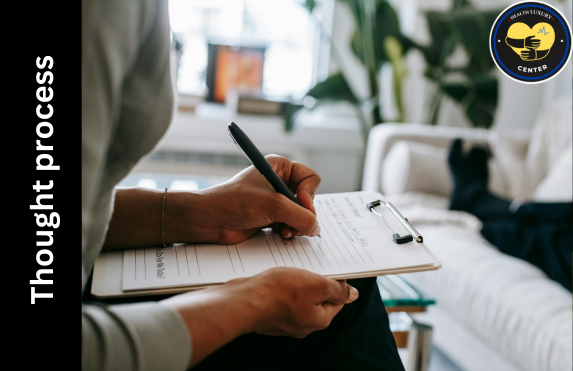Advertisements
Getting in touch with a therapist is one of the first steps when considering therapy. For many, this means contacting the therapist via email to schedule an appointment or ask questions about the therapist’s approach. Writing an email to a therapist for the first time can be intimidating and tiring, especially if you don’t know what to say or how to say it. But don’t fret, the aim of this article is to teach you how to email a therapist for the first time. With the few tips and guidelines we will give in this post, you can confidently craft an email that is professional, respectful, and effective.
It’s important to keep in mind that therapists are qualified professionals who are there to help you.
1. Gathering Your Thoughts
Before you start writing your email, take a moment to gather your thoughts. Consider what you want to say and why you are contacting this specific therapist. If writing things down helps you get your ideas in order, do so.
Think about what you want to achieve by talking to a therapist. Are you seeking general assistance or do you just need someone to talk to about a particular issue? Are you looking to understand yourself better, or do you want assistance with a particular issue?
Advertisements
Also, think about what you expect from therapy. What results are you hoping to achieve from it? And what are your goals? Remember that therapy takes time, so be patient as you work toward your desired outcomes.
2. Writing a Clear Subject Line
When composing your email, begin with a straightforward subject line. This lets the therapist know the purpose of your message and helps them prioritize their response. An effective subject line should include your name, why you’re contacting them, and the word “therapy.”
Here are some examples,
“Jane Doe – Seeking Therapy for Anxiety”
“John Smith – Wants Therapy for Problems in my Relationship.”
Keep it concise and specific, but don’t be overly generic or ambiguous.
Remember, the subject line is the therapist’s first impression of your email. so make sure it appropriately conveys the content of your message. A clear subject line increases the likelihood of a prompt response and ensures your email doesn’t get lost in the therapist’s inbox.
3. Introducing Yourself
Start your email by saying who you are. Tell them your name and why you want therapy. You can also say a little bit about yourself, like how old you are, what you do for work, and anything important about your health or personal background. Remember, therapists have to keep everything you say private, so you can trust them with personal information you might not tell anyone else.
How to Contact a Therapist
Do Therapists Work on Weekends
Can a Therapist Diagnose You with Depression?
4. Explaining Your Needs
Write an email body talking about what you need and what you want to accomplish with therapy. Say exactly what problems you’re having and what you hope therapy can help you with. This will make it easier for the therapist to assess whether you are a suitable fit for them and to understand your needs. You can also ask them questions about how they work or what experience they have.
5. Being Respectful and Professional
When you email a therapist, it’s important to show respect and act professionally. Start your email with their professional title and last name, like “Dear Dr. Smith” or “Hi Ms. Johnson.” Use proper language and avoid using slang or casual words. Keep your email polite and professional, and avoid making demands or being rude. Remember, therapists are there to help you, and being respectful helps create a good relationship with them.

Sending and Follow-Up
Once you’ve written your email, it’s important to check it before sending it. This helps you avoid mistakes or grammatical errors and makes sure your message is clear. You can use tools like Grammarly or Hemingway to help with this. Also, you can ask a trusted friend or family member to read it and give feedback.
After sending your email, be patient for a response. Some therapists might reply quickly, while others may take longer because they’re busy. Keep in mind that therapists have lots of clients and might not reply right away.
You can include a polite follow-up message in your original email to help manage your expectations. Saying something like “I understand that you may be busy, and I am willing to wait for your response” is one example of what you could say. By doing this, you get to show your appreciation for the therapist’s time and ease any pressure they may feel to respond immediately.
If you don’t hear from them in a week or two, you should write a follow-up email. You can kindly ask them in this email whether they got your first message and whether they’re still free to set up a session. Sending several follow-up emails, though, should be avoided as this could come out as pushy or disrespectful.
Final Thoughts
In conclusion, it doesn’t have to be intimidating to email a therapist for the first time. You may write a polite and professional email that improves your chances of receiving a response from the therapist by using the tips and templates provided in this article.
